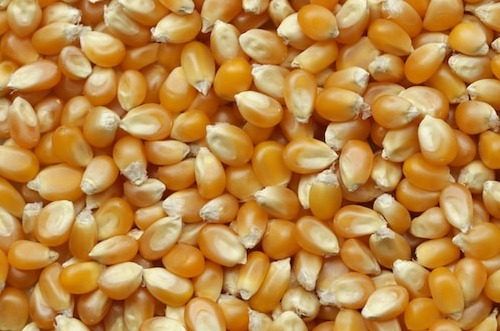W26: Maize (Corn) Update

In W26 in the maize (corn) landscape, Tridge’s analysis indicates that worsening drought conditions in the United States (US), particularly across Midwestern states like North and South Dakota, Iowa, Wisconsin, and Illinois, are impacting 64% of the corn crop, marking a 7% WoW increase. This exceeds the moderate drought levels observed in 2014, 2021, and 2022. The United States Department of Agriculture (USDA) reported the lowest weekly crop condition ratings in 30 years, with only 55% of the corn crop classified as good to excellent, significantly lower than the ratings in 2022. Although the USDA projects a record corn crop of 15.3 billion bushels for MY 2023/24, downward revisions are expected due to the worsening drought, with estimates ranging from 2% to 10% lower than the USDA's forecast. Tridge forecasts a corn production decrease to around 15 billion bushels. Adverse weather conditions have caused price increases in Chicago corn futures, with prices expected to remain high as drought conditions persist. These production challenges in the US could present an opportunity for Brazil, the second-largest corn supplier, as it is expected to harvest 132 million metric tonnes (mmt) in MY 2023/24. Production challenges faced by Argentina further strengthens Brazil's position. The USDA indicates that 50% of US corn was rated as good to excellent, a decline of 5% WoW, with 4% of the crop silking, matching the five-year average. This is attributed to mostly hot, dry weather conditions in W25. The USDA also indicates that, as of the week ending June 22, US corn export inspections reached 542.73 thousand mt, down 306.27 thousand mt WoW and 704. 22 thousand mt YoY, with shipments mainly destined for Mexico and Japan. So far in 2022/23, US corn shipments total 32.477 mmt, down compared to 47.428 mmt in 2021/22.
Tridge’s data analysis indicates that, over the past month, corn prices in Brazil rose due to supply concerns. In Piracicaba, wholesale prices of popcorn increased from USD 1.88/kg on May 29 to USD 1.96/kg on June 19, up 4.3%. Remaining attentive to the climate issues in the US, many Brazilian corn producers stayed away from the spot market over the past month, creating a supply crunch. The growing weather concerns in the US are making foreign markets more lucrative for Brazilian producers. Tridge expects prices to remain elevated over the next month as drought concerns persist in the US. SECEX reports that, in the first 16 working days of Jun-23, Brazilian unground corn (except sweet corn) exports totaled 632.01 thousand mt, 63.88% of the 989.3 thousand mt shipped throughout Jun-22. The daily average of Brazilian corn shipments was 39.5 thousand mt, a decrease of 16.2% compared to 47.11 thousand mt achieved in Jun-22. Experts indicate that reductions in corn production in the US are expected to have consequences for the country's ability to fulfill global demand. As a result, some of this demand is expected to shift to Brazil, which could provide support to domestic prices in the second half of 2023. The acceleration of corn shipments from Brazil is anticipated during this period, contributing to the overall market dynamics. Meanwhile, Brazil's unground corn exports were valued at USD 171.3 million in the period, 54.7% of USD 313.127 million exported throughout Jun-22. The daily average value of Brazilian corn exports stood at USD 10.71 million, down 28.2% compared to USD 14.91M in Jun-22. The price per ton obtained also dropped 14.4% in the period, from USD 316.50 in Jun-22 to USD 271.1 in the period.
Lastly, the Crop Estimates Committee in South Africa revised upwards South African commercial maize production estimate in the 2022/23 season to 16.36 mmt, up 1% compared to the May estimate and an increase of 6% compared to 2021/22, and the second-largest harvest on record. The expected abundant harvest is primarily due to high yields, despite a slightly lower planted area compared to the 2021/22 season. Out of the total production, approximately 8.64 mmt is white maize, while 7.71 mmt is yellow maize. With a crop of 16.35 mmt, South Africa is expected to have enough maize supplies to meet domestic demand of around 11.4 mmt and still have over 3 mmt available for export markets during the 2023/24 season.



